Back about fifty years ago now the science of Geology underwent a revolution in thought as overwhelming evidence supporting the theory of ‘Plate Tectonics’ was uncovered. The basic idea of plate tectonics is that the surface of the globe is broken into a number of plates that the continents sit upon. Those plates move, extremely slowly, only centimeters per year but they do move and as they move they jostle and crash against one another causing earthquakes to occur, mountains ranges and volcanoes to be born.
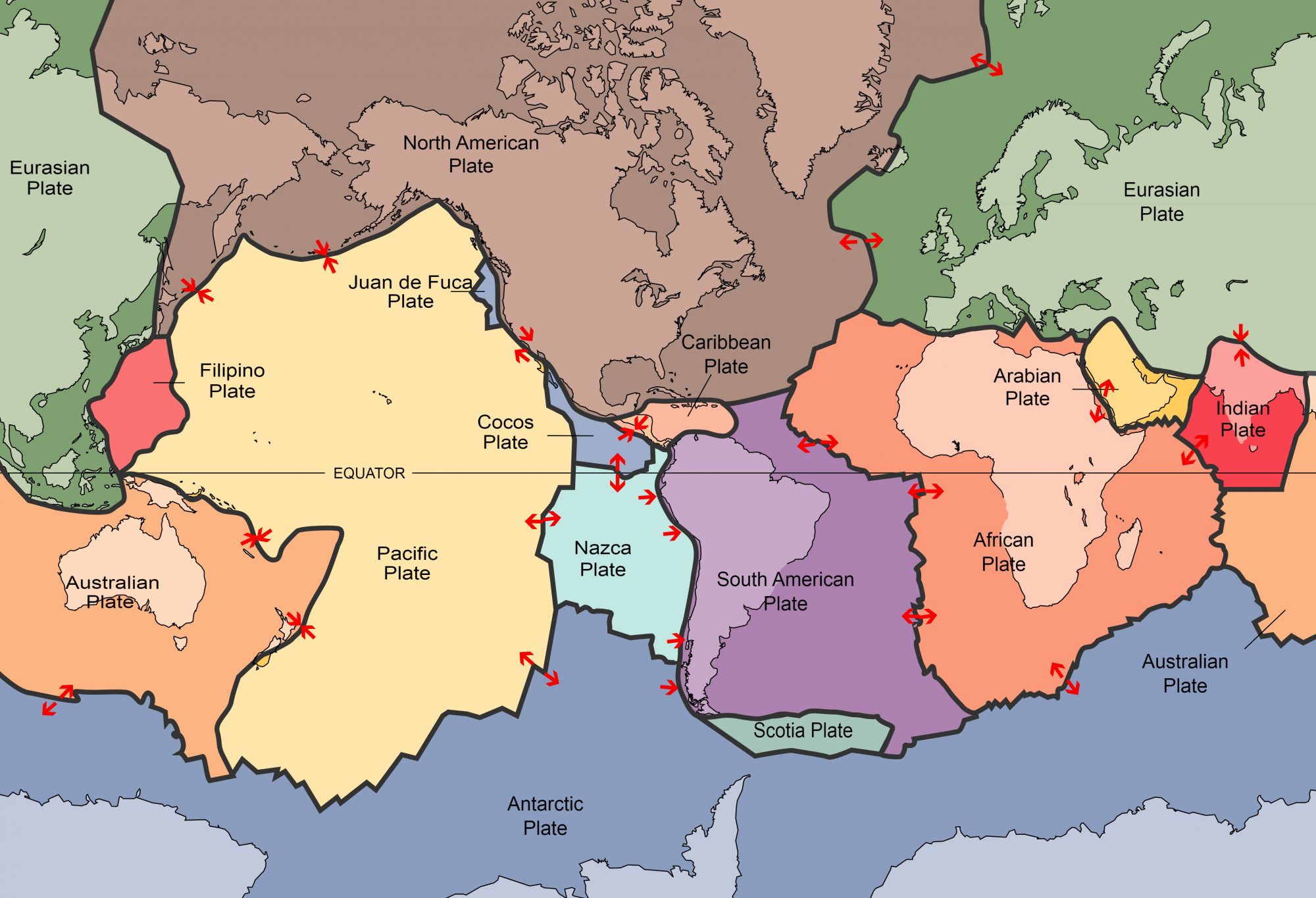
Sometimes one plate is forced under another, and when that happens a ‘subduction zone’ is created and one of the geologic features that can occur in such a zone is a deep-water trench such as the Marianas Trench, the deepest place in all of the oceans. The Marianas Trench is in fact only one of about a dozen trenches that are a part of the famous ‘Ring of Fire’ surrounding the Pacific Ocean. The precise mechanics of how these subduction zones are generated is very complicated, several attempts have been made to develop numerical models for analyzing them with computers.
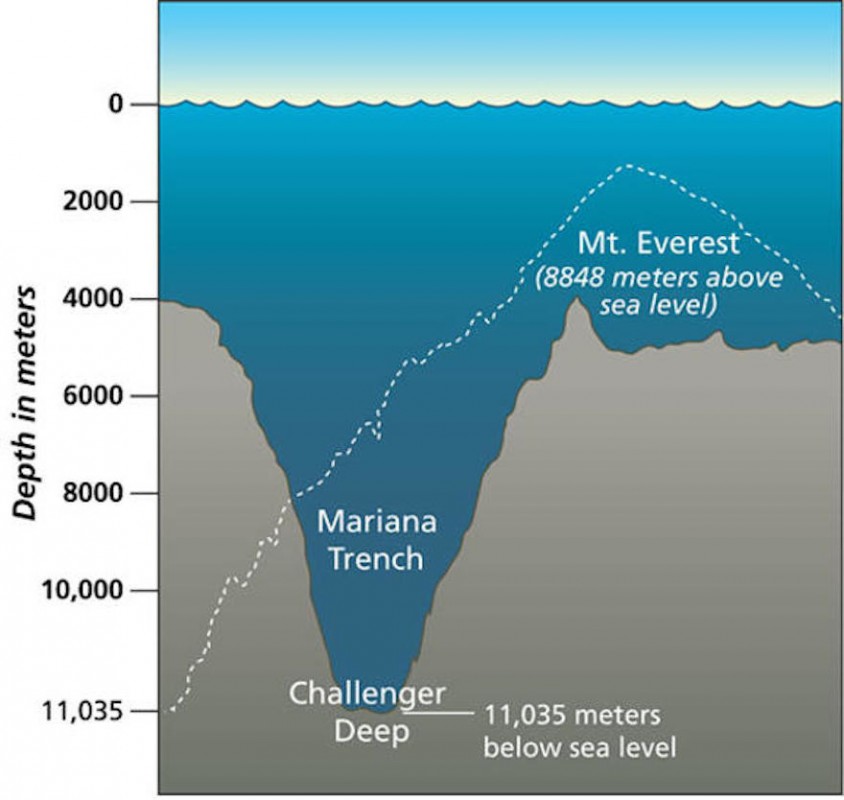
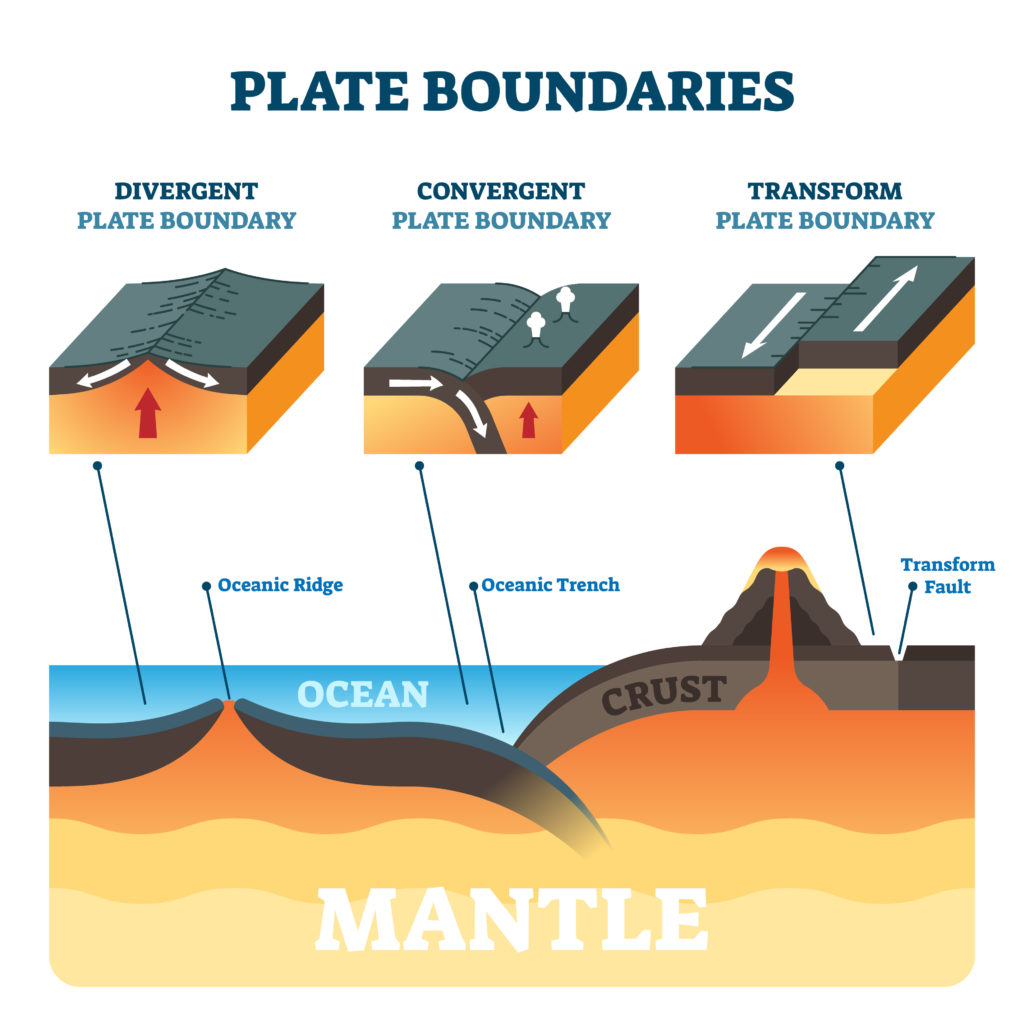
Now a new such model developed at the Instituto Dom Luiz at the University of Lisbon in Portugal has shown great promise in providing a more comprehensive and accurate picture of subduction zone evolution. This new simulation is different from previous models in that it is a full scale three-dimensional reproduction of what is going on at a subduction zone. In the program all of the dynamic forces that effect the generation and evolution of subduction zones were realistically incorporated, including gravity.

Such large scale simulations can require a lot of computer time; in fact each analysis using this new model takes as much as a full week to process using the supercomputer at Johannes Gutenberg University in Germany. Still the results are well worth the effort. According to Jaime Almeida, first author on the study. “Subduction zones are one of the main features of our planet and the main driver of plate tectonics and the global dynamics of the planet.”

Plate Tectonics has taught us much about the broad outline of how the surface of our Earth has changed over billions of years. However a more precise and accurate model of the processes involved may help us better understand, and therefore predict the disasters like earthquakes and volcanoes that are a common threat around the world.

Now I’d like to take a moment to update a geology story that I posted about back on the 24th of June 2020 and 10th of April 2021. The story concerned the discovery of two huge, massive blobs that exist deep within the Earth’s mantel. These blobs are formally known as Large Low-Shear Velocity Provinces (LLSVPs) and differ in composition and viscosity from the surrounding material deep within the Earth. (Previously these blobs were known as Ultra Low Velocity Zones or ULVZs). The LLSVPs were detected because; being made of different materials the vibrations caused by earthquakes travel through them at a lower velocity, hence Low-Shear Velocity. They were discovered by analyzing the data from hundreds of earthquakes as measured by seismographs from around the world.
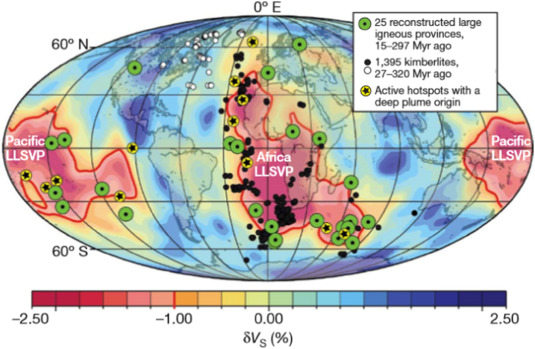
The two LLSVPs are situated one beneath South Africa and the other beneath the Pacific Ocean and are each the size of a continent with a thickness of greater than 500 km. Also, it has been speculated that the blobs may in fact be the remnants of an ancient planet called Theia that collided with the Earth four and a half billion years ago fragments of which then became our Moon.

Now a new analysis of the LLSVPs by Qian Yuan and Mingming Li of Arizona State University’s School of Earth and Space Exploration has been published in the journal Nature Science. In the article the researchers assert that the LLSVP under Africa is almost 1000 km further from the center of the Earth, and therefore closer to the surface than the one under the Pacific. In an attempt to explain this difference in height the researchers hypothesize that the Africa LLSVP could be less dense and therefore it may be ever so slowly rising through the Earth’s mantel. “The Africa LLSVP may have been rising in recent geological time,” states author Li. “This may explain the elevating surface topography and intense volcanism in eastern Africa.”
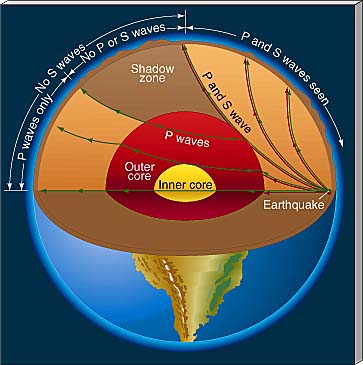
It is harder to study what goes on just a few hundred kilometers beneath our feet than it is to study the surface of the Moon or Mars, certainly we’ve sent more probes to the Moon or Mars than we have to a hundred kilometers down. Nevertheless bit by bit geologists are learning the secrets of the planet we all call home.
